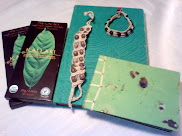 B
Before you let the boring title scare you, I'll have you know that these results are actually quite interesting.
For the
first stage of field work, where I measured board production with Santa Maria Poniente's new microsawmills, I calculated how much work it took to slice up a log, as well as how much of the log was wasted.
On average, it took about four man hours (hours x # of people on each task) to cut a log into slabs.* Sounds like a long time, especially when compared to a
conventional sawmill. However, you have to remember that these people badly need work, so labor intensiveness might actually be a good thing. With a softer (and more valuable) wood like Mahogany, that number is almost cut in half. The problem here is not labor, but gasoline and oil - the chainsaws don't run on sweat.
From an initial log, about 40 % of the wood ends up in the board to be sold. Apparently thats quite good, but it sounds depressingly low to me. 60% of the wood goes to waste, and that's not even counting the rest of the tree that stays in the woods! Some of that waste is unavoidable - since we're using chainsaws to cut slabs, the thickness of the saw (and a bit more for bouncing) turns to sawdust as the Ejidatarios turn logs to boards. Given enough of this sawdust, you can apparently sell it, as the people at the
Chunhuhub Sawmill do.
The rest of the waste has a bit more potential. Its composed of perfectly solid wood scraps that were simply too small or too curvy to fit into a boring, straight board. The Ejidatarios say they'll use the small ones for firewood, the long tops and bottoms of logs for fencing. "Nothing goes to waste here" one man told me as I was measuring the scraps. Thats a good enough use, but it would be nice to get these people some money for the stuff too.
I've been talking to Hector about
natural edge furniture, an idea I also tried to push on
ASD when
I was there. The basic idea is to use the beautiful, curvy edges of trunks to form the edge of tables, desks or benches, rather than that boring straight edge. It would definitely save a lot of wood from the scrap heap, but its mostly an export market that requires connections.
When
I went into the forest in stage two, I measured work and output again, though it was a bit less accurate since its impossible to keep track of everyone at once with those pesky trees blocking the view. The longest single task of every day, surprisingly enough, was just getting out to the woods on that rocky, slow going road. All in all, it took 1 1/4 man hours** to get each tree out to the log landing, at a rate of 23 trees per day.
Unfortunately, much of that labor (and money) is lost to outsiders who come in to operate the Treefarmers, hook logs to them, and even ocassionally cut the actual trees as well.
In the final and most exciting/depressing stage, Valentin and I measured the impact of the
Treefarmer on the plant communities it crushes on its way to the trees. In a single day the treefarmes pummeled almost half a hectare (1.2 acres) of forest to get at 16 trees. "Forest" is a slippery word, so here's a table (first table on the blog!) showing what exactly got trampled.
| Tamaño (cm) | Especie | Porcentaje |
| Menos de 1 | Desconocido (bambu?) | 31.10% |
| Menos de 1 | Limonaria | 17.49% |
| Menos de 1 | Zapotillo | 16.63% |
| Pequeño, de 1 a 4 | Laurel | 27.27% |
| Pequeño, de 1 a 4 | Zapotillo | 17.75% |
| Pequeño, de 1 a 4 | Limonaria | 8.23% |
| Chico, de 5 a 10 | Zapotillo | 28.57% |
| Chico, de 5 a 10 | Yaiti | 14.29% |
| Chico, de 5 a 10 | Jabin | 7.14% |
| Chico, de 5 a 10 | Kekemche | 7.14% |
| Intermedio, 11 a 20 | Yaiti | 26.67% |
| Intermedio, 11 a 20 | P'erezkuts | 20.00% |
| Grande, 21 a 30 | Kaskat | 25.00% |
| Grande, 21 a 30 | Tas ta'ab | 25.00% |
| Grande, 21 a 30 | Tsubint'ul | 25.00% |
| Grande, 21 a 30 | Tzubinche | 25.00% |
| Adulto, mas que 31 | Zapotillo | 100.00% |
Attached and in Spanish are the guide I gave to
OEPF to describe the data, and the data sheets themselves. Enjoy.***
Guia a los datos
Board Production
Production in the Woods
Destruction in the Woods
Extra Data
Nerdily,
Andon
--
* As I was taking data, one ejidatario made a pretty astute observation: "You shouldn't be taking this data now, you should take it once we actually know what we're doing." Since I was recording data from the first three days of learning about the micro-sawmill system, one should expect productivity to rise as they gain more experience. The other problem with this whole exercise is the low sample size, so it should really be taken as a way to get an idea of whats going on as opposed to real science. Maybe someday I'll go back and measure again.
** Sexist term anyone? But hey, its a standard measure of productivity. The fact is they were all men, so oh well.
*** If you enjoyed this post, that makes you a forestry geek. Congratulations!



